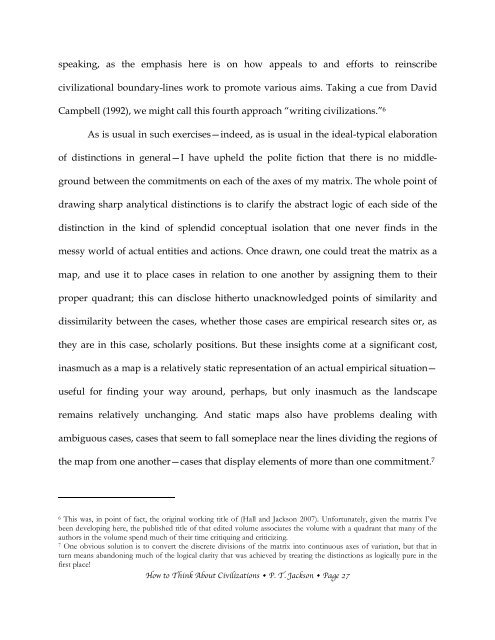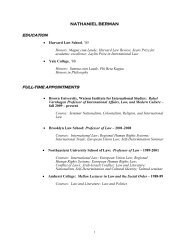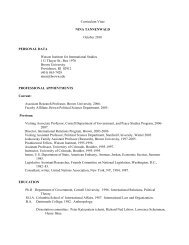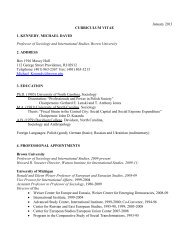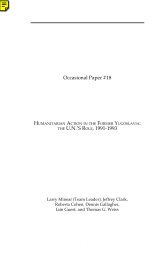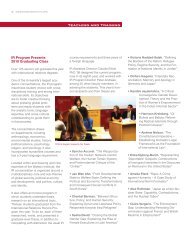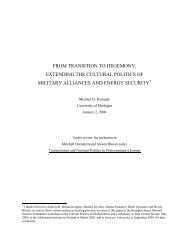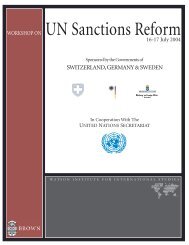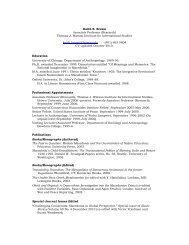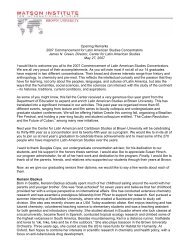How to Think About Civilizations - The Watson Institute for ...
How to Think About Civilizations - The Watson Institute for ...
How to Think About Civilizations - The Watson Institute for ...
Create successful ePaper yourself
Turn your PDF publications into a flip-book with our unique Google optimized e-Paper software.
speaking, as the emphasis here is on how appeals <strong>to</strong> and ef<strong>for</strong>ts <strong>to</strong> reinscribe<br />
civilizational boundary-lines work <strong>to</strong> promote various aims. Taking a cue from David<br />
Campbell (1992), we might call this fourth approach “writing civilizations.” 6<br />
As is usual in such exercises—indeed, as is usual in the ideal-typical elaboration<br />
of distinctions in general—I have upheld the polite fiction that there is no middleground<br />
between the commitments on each of the axes of my matrix. <strong>The</strong> whole point of<br />
drawing sharp analytical distinctions is <strong>to</strong> clarify the abstract logic of each side of the<br />
distinction in the kind of splendid conceptual isolation that one never finds in the<br />
messy world of actual entities and actions. Once drawn, one could treat the matrix as a<br />
map, and use it <strong>to</strong> place cases in relation <strong>to</strong> one another by assigning them <strong>to</strong> their<br />
proper quadrant; this can disclose hither<strong>to</strong> unacknowledged points of similarity and<br />
dissimilarity between the cases, whether those cases are empirical research sites or, as<br />
they are in this case, scholarly positions. But these insights come at a significant cost,<br />
inasmuch as a map is a relatively static representation of an actual empirical situation—<br />
useful <strong>for</strong> finding your way around, perhaps, but only inasmuch as the landscape<br />
remains relatively unchanging. And static maps also have problems dealing with<br />
ambiguous cases, cases that seem <strong>to</strong> fall someplace near the lines dividing the regions of<br />
the map from one another—cases that display elements of more than one commitment. 7<br />
6 This was, in point of fact, the original working title of (Hall and Jackson 2007). Un<strong>for</strong>tunately, given the matrix I’ve<br />
been developing here, the published title of that edited volume associates the volume with a quadrant that many of the<br />
authors in the volume spend much of their time critiquing and criticizing.<br />
7 One obvious solution is <strong>to</strong> convert the discrete divisions of the matrix in<strong>to</strong> continuous axes of variation, but that in<br />
turn means abandoning much of the logical clarity that was achieved by treating the distinctions as logically pure in the<br />
first place!<br />
<strong>How</strong> <strong>to</strong> <strong>Think</strong> <strong>About</strong> <strong>Civilizations</strong> • P. T. Jackson • Page 27


